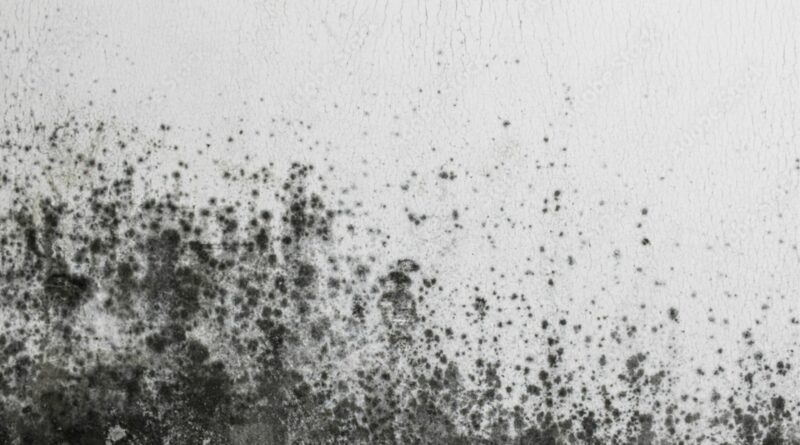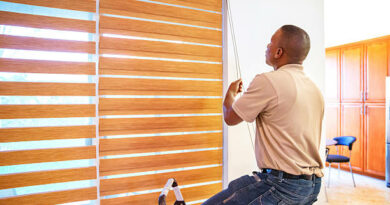How to Clean Black Mold Safely: Expert Tips for a Healthier Home
We all know black mold as an unwelcome houseguest. Unsurprisingly, it is more than just an eyesore and can pose a serious threat to your home and health. It is known for its potential to trigger immediate discomfort and even long-term illnesses.
If you’ve discovered black mold, don’t ignore it! It is a problem that should be tackled promptly and effectively. However, there is no need to panic, because, with the right approach, you can safely clean black mold and keep it from coming back.
Here’s a step-by-step guide to help you get started.
Understanding Black Mold
Black mold (Stachybotrys Chartarum) thrives in damp, humid environments. You will often find it in places like bathrooms, basements, kitchens, and areas with water damage. It grows on porous materials like drywall, wood, and carpet.
Look in those places and if you find dark green or black spots with a musty odor, your home too has been encroached on.
Why Black Mold Is Dangerous
Mold releases spores into the air which can enter your system when breathing or through your eyes and mouth. While not all black mold is toxic, A research paper published in 2020 stated that prolonged exposure can lead to –
- Allergic reactions (sneezing, runny nose, itchy eyes).
- Respiratory issues, especially in people with asthma or compromised immune systems.
- Headaches, fatigue, and digestive disorders.
- A plethora of neurological symptoms
What You’ll Need to Remove Black Mold
Before you go diving in, let’s get you ready for the deed. Here are listed the right tools and protective gear you will need –
- Protective gear: Gloves, goggles, and an N95 mask.
- Cleaning supplies: Vinegar, hydrogen peroxide, or a commercial mold cleaner.
- Scrubbing tools: Brushes(preferably metal wire brushes or ones with hard bristles) and sponges.
- Buckets and rags.
- Sealant or mold-resistant paint (for prevention afterward).
Step-by-Step Mold Removal Process
1. Prepare the Area
The first step is to ventilate the space by opening all the windows and doors in the area and sealing off the affected area with plastic sheeting to prevent the spore from spreading. Remember to always wear your protective gear to minimize exposing yourself to mold and spores.
2. Remove Mold-Infested Items
Look around and find any porous materials like carpets, insulation, or drywall, that the mold has infested. You may need to dispose of them. Put the items into a bag and seal them before removing them from your home to avoid spreading the contamination.
3. Apply a Mold Cleaner
Now it is time to apply the safe and effective cleaning solutions we mentioned before. Spray undiluted white vinegar on the affected area and let it sit for an hour before scrubbing. Then, mix a 3% solution of hydrogen peroxide and apply it directly to the mold. Leave this on for 10-15 minutes before scrubbing.
You can also use a commercial mold cleaner. These usually have the manufacturer’s instructions mentioned on the label and you should follow them for the best results.
4. Scrub Thoroughly
Use a brush or sponge to scrub the mold off hard surfaces. Make sure you are not scrubbing dry because the mold will end up releasing spores into the air. Properly rinse the area with water after scrubbing and wipe it dry.
5. Disinfect and Dry
To drive it home, disinfect the area using a bleach solution (1 cup of bleach to 1 gallon of water) or another appropriate disinfectant. Be sure to let the area dry completely because mold thrives in moisture, so ensure there’s no dampness left.
Preventing Mold from Coming Back
As the saying goes; prevention is better than cure. Here are some simple tips to keep mold from coming back which you can also use from the start to avoid mold from even setting in –
- Control Humidity: Keep your indoor humidity levels below 50%. If you have areas that are always particularly damp, you can periodically use a dehumidifier.
- Fix Leaks immediately: Address plumbing or roof leaks immediately to prevent water from seeping into walls or floors. Even a tiny leak can end up causing major damage over time.
- Ventilate Properly: Make sure there is adequate ventilation in high-moisture areas like bathrooms and kitchens. Installing exhaust fans in these areas is always a good idea.
- Use Mold-Resistant Products: There are many mold-resistant products out there these days like mold-resistant drywall, paint, and caulk, and we recommend you use them at least in areas prone to dampness.
When to Call a Professional
While the methods outlined in this blog are effective for cleaning black mold in small, easily accessible areas, if you’re dealing with an infestation larger than 10 square feet or located in hard-to-reach spots such as HVAC systems, it’s best to call in professional help.
Mold remediation specialists have the expertise and tools that let them safely and thoroughly remove even extensively spread mold.
Stay Proactive for a Healthier Home
The key to tackling black mold growth is to act quickly. With the right precautions and methods, doing away with the infestation and preventing future growth is a manageable task. A mold-free home doesn’t just look cleaner, it is a healthier environment for you and your family.
If you were able to use these steps to tackle your mold problem successfully, share your tips in the comments. Let’s create healthier homes together!




